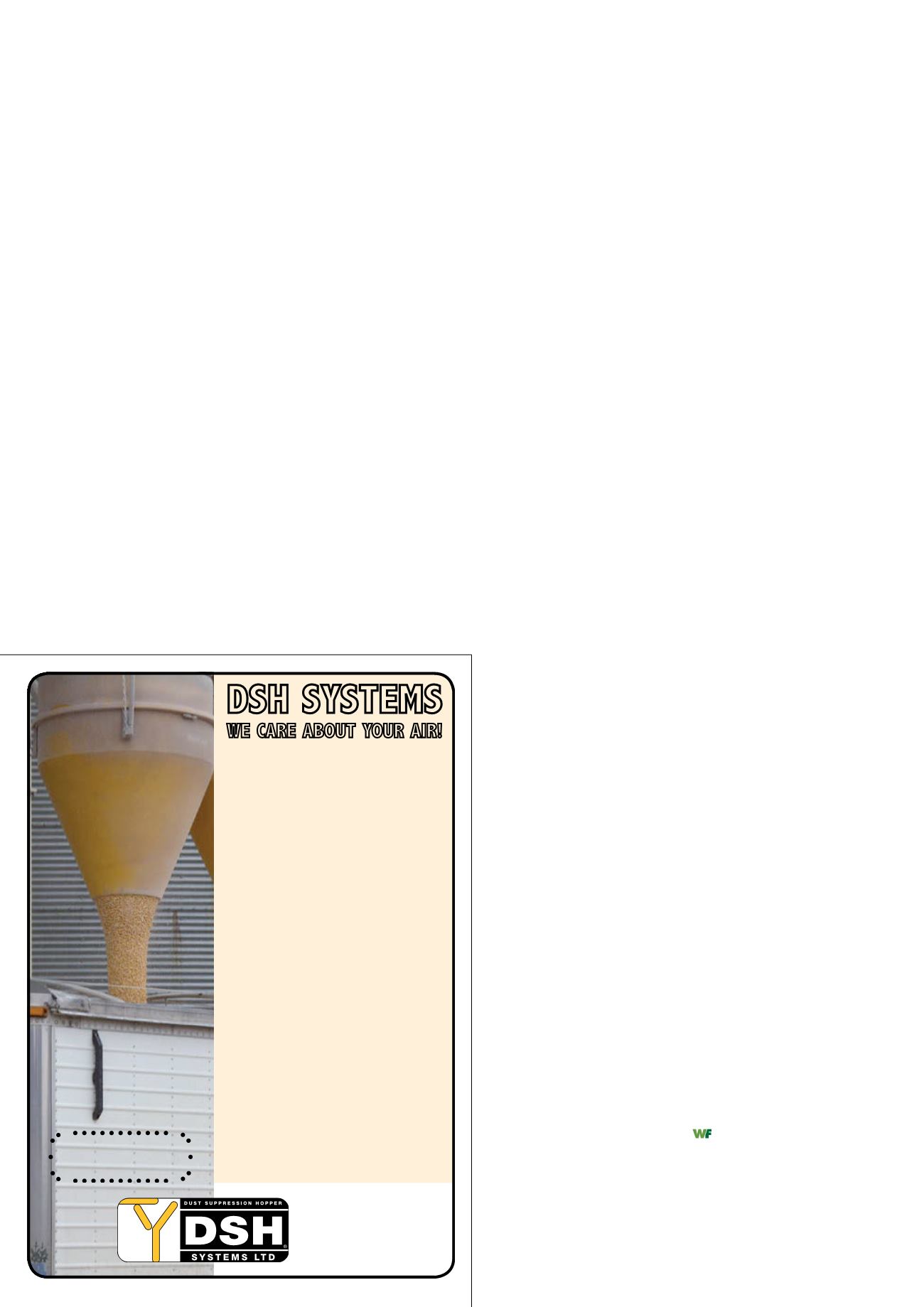
68
| WORLD FERTILIZER |
NOVEMBER
prills to ammonium nitrate and CAN, NPKs, MAP, DAP, TSP
and ammonium sulfate. Certain details are altered to allow
for the differing properties of different products but the
principles of operation remain the same.
With its compact, vertical, modular design, it can be
accommodated in even the most compact facility layouts. It
is a good option for facilities that lack space but still want to
increase production capacity either by replacing an existing
cooler, as in the case of NAK Azot, or supplementing the
existing cooling equipment. It is also ideal for facilities that
want to gain all the advantages of modern technology but
need to accommodate a retrofit within an existing layout.
One of the keys to good product quality is correct
temperature to storage. The Solex product cooler design is
based on rigorous thermal modelling to guarantee precise
discharge temperature control; this ensures that the product
temperature to storage is optimal. Ammonium nitrate and
calcium ammonium nitrate create special challenges due to
their phase changes and associated heat loads. Solex's
proprietary thermal modelling allows for this complex
phenomena, guaranteeing the final product discharge
temperature and ensuring that all of the product has
converted to the lower temperature phase. Meeting both of
these requirements is necessary to ensure a top-quality
product.
When it comes to installation, the cost of integrating a
Solex cooling system is typically at least 30% lower than the
cost of direct cooling technologies. Its operating costs
deliver upwards of 90% annual energy savings – which, in a
facility producing 3600 tpd of fertilizer, can equate to cost
savings of over US$750 000/yr. Maintenance costs are also
virtually eliminated; there are no moving parts and the
system operates with a fraction of the components of
direct cooling technologies.
With increasing pressure on fertilizer producers to
achieve social licence, minimise their reliance on
carbon-based energy sources and curb greenhouse gas
(GHG) emissions, the product cooler hits multiple targets. It
contributes locally by eliminating the risk of dust and odour
emissions and ensuring compliance with ambient air quality
objectives. It shows industry leadership by reducing power
consumption – power that is typically derived from
emissions-heavy, coal-fired power plants – by over 90%. It
promotes sustainable development, addresses global
concern surrounding rising GHG emissions, and avoids
costly carbon levies – all additional benefits of a 90%
reduction in energy use.
The end product: NAK Azot’s granulated
calcium ammonium nitrate
With an extensive list of value-added advantages, NAK Azot
saw the immense potential that could be achieved by
replacing its rotary drum. The equipment took less than five
months to deliver and, in this one step, it achieved
unparalleled gains. Instead of a 1:1 swap, where the product
cooler simply acted as an alternative to the rotary drum
cooler, NAK Azot replaced the rotary drum and was able to
eliminate its reliance on bulk storage. In eliminating its
reliance on bulk storage, it recouped the three to four day
final cooling time period, as well as the high costs and large
physical footprint associated with it.
In place of the rotary drum and bulk storage cooling,
Solex’s technology accepted the granulated calcium
ammonium nitrate directly from the fluid bed dryer. The
fertilizer product entered the product cooler at a
temperature between 65 – 70°C and left it at an
optimum temperature of between 37 – 41°C. It was
discharged from the cooler without breakage or fines
and ready to be packed or shipped in bulk to the
customer directly from the unit. Its shift from a highly
variable three-stage cooling process to a gentle, reliable,
non-contact, two-stage process allowed it to achieve
calcium ammonium nitrate granules that keep form,
resist caking and hold their value during production,
storage and transport.
NAK Azot chose to challenge convention and
discover the immense potential of a new design
paradigm. It went seeking a means to improve its
product while increasing its capacity. The solution
exceeded its expectations and NAK Azot’s calcium
ammonium nitrate is now among the best in Europe. The
end results led NAK Azot to also employ Solex product
coolers to produce its high-density ammonium nitrate.
Two product coolers are delivering the same high results
achieved with its calcium ammonium nitrate. With its
investment in Solex’s indirect cooling technology and
other plant process changes, NAK Azot has quickly
emerged as one of the most reputable and efficient
fertilizer operations in Europe.
Note
Solex’s technologies are subject to patents and patent applications
in various jurisdictions around the world.
DSH SYSTEMS
WE CARE ABOUT YOUR AIR!
Solve the world-wide industrial material handling
problem – dust fallout while transferring dry,
granular goods.
At the loading point, the DSH System concentrates
the discharge of dry goods as a solid column
through free air into any target repository
including trucks, rail wagons, ships, barges,
storage containers, bags or stockpiles.
The DSH Dust Suppression System uses no utilities
and has no internal moving parts.
Winner (joint) of the Inaugural Innovative
Technology Award at BulkEx 2006.
Winner of the Dust Control Technology “Application
or Practice” at BulkEx 2007.
The DSH System gives you:
•
Cleaner, safer working environments
•
Dust explosion risk mitigation
•
Reduced maintenance, cleaning and dust
handling
•
Faster, continuous, cleaner loading of trucks
and rail wagons
•
Enables operation in closer proximity to urban
areas
•
Reduced product shrinkage.
•
Reduced environmental agency concerns
Clients include companies handling fertilizers,
grains, stock-foods, salt, sugar, sand, etc in
Australasia, USA, Canada, South Africa, South
America, and Europe (East and West).
ENQUIRIES
DSH SYSTEMS LTD
EMAIL:
PHONE: +64 (0) 9 828 8012
WEB:
NO DUST!


